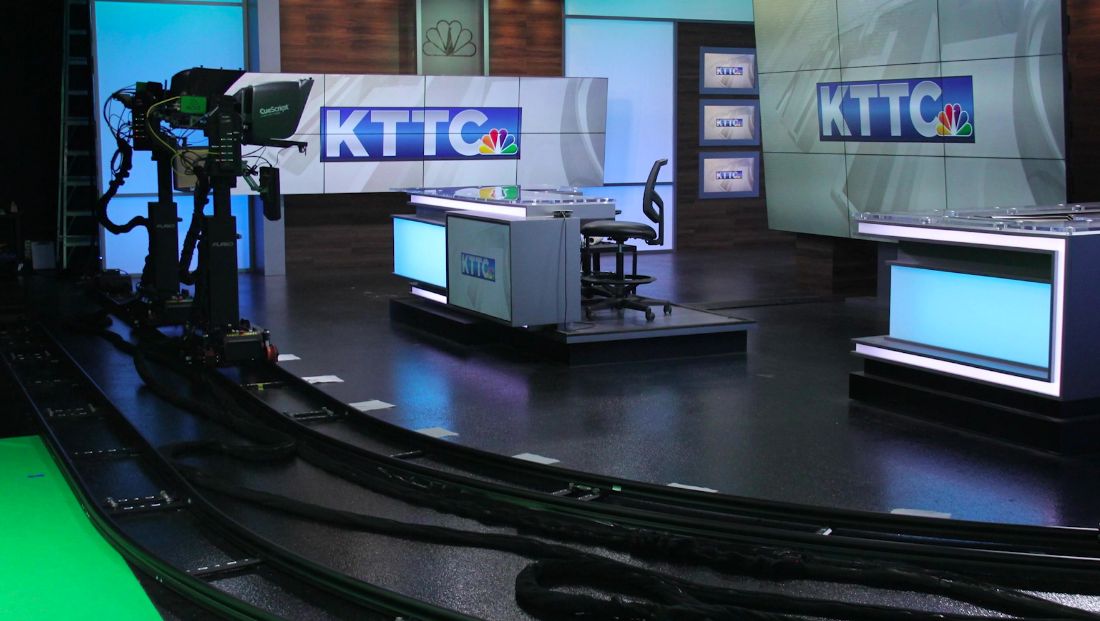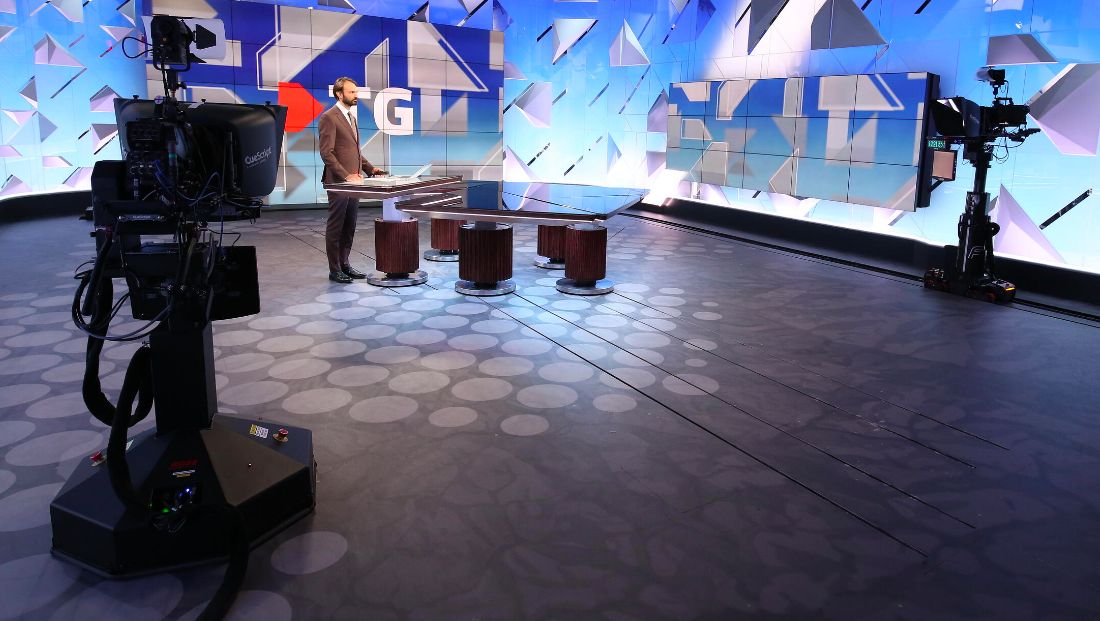Challenges with robotic camera systems in broadcast

Subscribe to NCS for the latest news, project case studies and product announcements in broadcast technology, creative design and engineering delivered to your inbox.
As broadcasting technology evolves, film and television professionals increasingly turn to robotics to automate parts of the process and create a wider range of shots to capture viewers. As cameras grow smaller and improve with the ability to be controlled remotely with robotics, broadcasters and television producers are getting more creative to stand out among the competition.
These camera systems offer the ability to shoot from multiple angles. Robotics are also useful during live sporting events, because they can be programmed to stay with players through advancements like facial recognition. Robotics might not replace human operators, but they can be used to supplement their work and bring a wider variety of shots for your broadcast.
But broadcast robotics aren’t without their challenges. Read on to learn about the potential pitfalls of robotic camera systems and how you can solve them.
Space restrictions
One of the main reasons you might opt for robotic camera systems is the ability to shoot from multiple angles. But because broadcast robotics aren’t limited to a single spot on the floor like traditional mounted cameras, studios have been getting smaller. Karen Walker, VP of camera motion systems with Ross Video, explains why this can present a problem.
“The number of talent positions within each space may actually be increasing. Less space is available for the robots, and there are few areas within the studio that do not appear on air at some point. This makes it more difficult to keep cable looms and the robots themselves out of view of the cameras.”
To combat this challenge, Walker recommends using rail-based cameras, because they use less space, and multiple cameras can share the rail. Integrating the rail into the floor and hiding cables underneath makes the space look cleaner and less cluttered.
Flooring options
Modern studio designs also present potential pitfalls to using robotic cameras.
“Broadcasters are no longer satisfied with basic black, epoxy-coated floors. Studio designers are experimenting with all sorts of flooring surfaces, multi-level designs, and more, which makes it challenging for floor-based robots. Fortunately, however, there are ceiling-based robotic solutions for these situations,” Walker noted.
Ceiling-based studio robotic camera systems may pose safety and stability problems, and you have to incorporate them into the lighting. Some studio designers have also started incorporating the ceiling into the overall design so it can be shot too. If you choose a ceiling-based system, work with professional designers and production professionals to make sure your setup is safe and secure.
Studio design challenges and robotic cameras
When using old, floor-mounted cameras, studios had to plan enough floor space to accommodate them without interfering with the shot. Walker says that robotic camera systems offer more flexibility to studio designers. “Now, you can easily tuck the cameras away on floor rails close to the walls or ceiling rails, giving much more freedom to the set designers.”
This doesn’t mean that you can design the studio with no consideration for the camera.
If you’re using rail-mounted cameras or using robots that will move around the floor, plan for them so they can get the shots you need in your final broadcast. And design the studio with plenty of spaces for tucking cables and other unsightly materials.
There is a learning curve
Anyone who has been in broadcasting for a long time is probably used to working with floor-mounted cameras. Your broadcast team is likely trained for static cameras and typical camera angles. It might take them some time to adjust to a robotic camera system.


“Adapting to the learning curve of a new system is a challenge that should be considered, as it’s common for a broadcaster’s entire workflow to change when moving to a robotic solution,” Walker suggests.
“However, the learning curve is surprisingly low because once shots and moves are programmed into the system, there is little for the operator to do during daily broadcasts, apart from doing on-air corrections if the talent does not do what was predicted — and even that can be fully automated with facial tracking.”
Risk of obsolescence
Like the technology in most industries, broadcast robotics are ever-changing. If you’re thinking about redesigning your studio to incorporate studio robotic camera systems, you might hesitate on the chance that changing technology will render your design obsolete and you’ll constantly be changing up your studio. But choosing the right designers and equipment will help you in the long run.
Walker offers this advice, “Ross strongly believes in open and modular architectures that make it easy for a customer to start with a basic system and expand it. None of the robotic systems we have sold in the last ten years have been made obsolete in a way that they cannot be upgraded to perform like the current robotic systems on the market. This is an enormous achievement when compared to the offerings of other manufacturers in this market.”
Make your studio robotics friendly
If you haven’t already equipped your studio for robotic broadcast systems, you will likely need to in the near future. Many studios are already using this technology to enhance their broadcasts, letting viewers get closer to the action than ever.
You may be interested in multiple rail-mounted cameras, or you might prefer a ceiling-mounted system to keep wires and cables out of the shot. Whatever your preference, equipping your studio with robotics will help you automate your processes while making your broadcasts more visually interesting for viewers.
The technology can also help you get into newer areas of broadcasting like virtual reality programming. If you’re ready to convert your studio, start with the final product in mind.
Think about what kinds of angles you want to achieve and how you want to get them. This way, you can start planning on where to install rails, how to set up your flooring, and how to create your set. If you opt for ceiling-mounted cameras, you will have to consider safety, lighting, and other factors to enhance your production value.
Once you’ve installed your robotic camera system and you’re using it regularly, you might just unleash more creativity within your production process.
Subscribe to NCS for the latest news, project case studies and product announcements in broadcast technology, creative design and engineering delivered to your inbox.






tags
Karen Walker, RailCam Robotic Systems, robotic cameras, Ross Video
categories
Broadcast Equipment, Camera Control & Camera Robotics, Cameras, Heroes